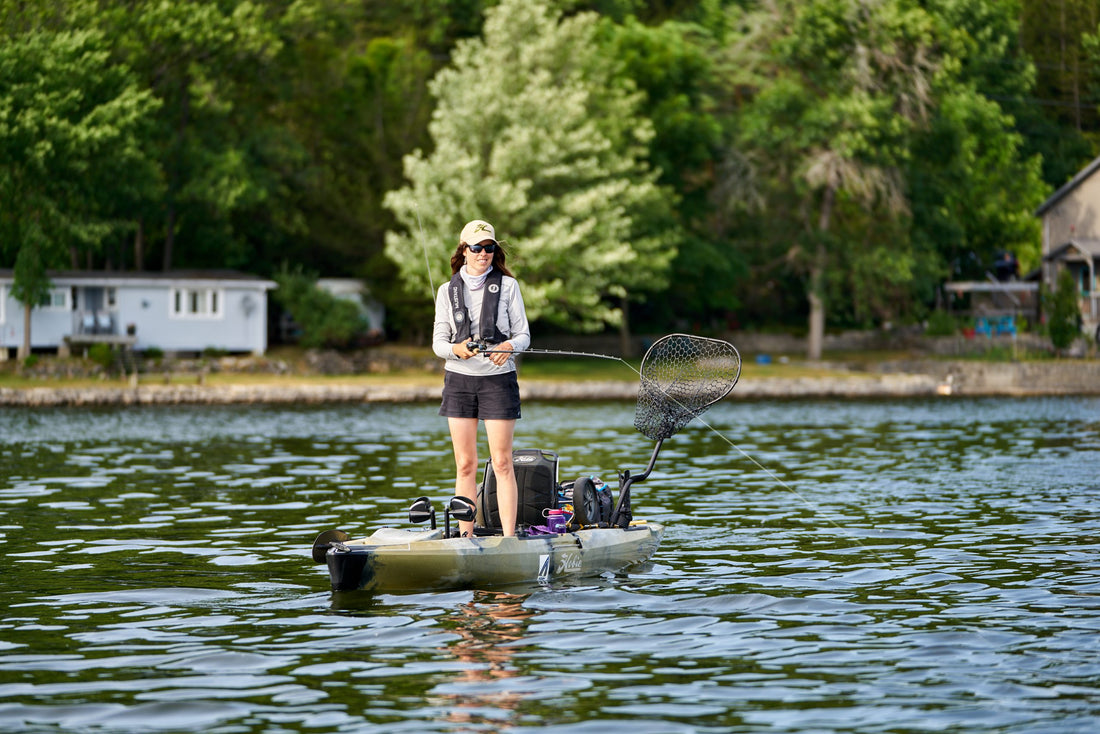Fishing for sturgeon can be a thrilling and rewarding experience for both seasoned anglers and beginners. These ancient fish, which have been around for over 200 million years, are known for their size, strength, and elusive nature.
However, before you head out on your first sturgeon fishing trip, there are a few important things you need to know. In this beginner's guide, we will cover everything from the gear and techniques needed to the best places to catch sturgeon.
Gear
The first thing you will need for sturgeon fishing is the right gear. These fish can grow up to 20 feet in length and weigh over 1,500 pounds, so you will need heavy-duty equipment that can handle the fight.
-
Rod: A heavy-duty saltwater rod with a fast action and a strong backbone is ideal for sturgeon fishing. Look for a rod with a test strength of at least 80-100 pounds.
-
Reel: A reel that can hold at least 300 yards of 80-100 lb test line is recommended. A conventional or baitcasting reel will work well.
-
Line: A braided line with a test strength of at least 80-100 pounds is recommended. The braided line will provide more sensitivity and control when fighting a sturgeon.
-
Leader: A heavy-duty leader of at least 100-150 pounds is recommended. A leader made of fluorocarbon or steel is a good option.
-
Hook: A strong, sharp hook with a test strength of at least 100-150 pounds is recommended. A circle or J-hook is a good option.
Techniques
Once you have the right gear, the next step is to master the techniques needed to catch a sturgeon. These fish are known for their strength and endurance, so you will need to be prepared for a long fight.
-
Bait: The most effective bait for sturgeon fishing is fresh or frozen herring, sand crabs, or worms. These baits are known to attract sturgeon and are easy to find at most bait shops.
-
Drifting: One of the most popular techniques for catching sturgeon is drifting. This involves drifting with the current while keeping your bait at the bottom of the river or bay.
-
Anchoring: Another technique that is popular among sturgeon anglers is anchoring. This involves dropping an anchor and waiting for a sturgeon to take the bait.
-
Trolling: Trolling is a technique that involves dragging a bait behind a moving boat. This is a good option for catching sturgeon in the ocean or larger rivers.
-
Bottom bouncing: Bottom bouncing is a technique that involves drifting with the current while keeping your bait on the bottom of the river or bay. This is a good option for catching sturgeon in areas with a lot of rocks or debris.
Best Places to Catch Sturgeon
Sturgeon can be found in a variety of habitats, from freshwater rivers and lakes to saltwater bays and oceans. However, some places are known to be more productive for sturgeon fishing than others.
-
Sacramento River: The Sacramento River is one of the most popular places to catch sturgeon in California. The river is home to a large population of sturgeon, and it is known for its trophy-sized fish.
-
Columbia River: The Columbia River is another popular place to catch sturgeon in the Pacific Northwest. The river is known for its large sturgeon, and it is a popular destination for both recreational and commercial anglers.
-
Fraser River: The Fraser River in British Columbia

